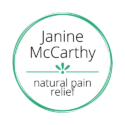How to support your baby’s natural posture
Have you noticed the epidemic of poor posture in our society? We know this is connected with using mobile phones and other devices daily, but how can you help your children develop good posture habits so they can avoid the chronic back, neck and shoulder pain so widespread in adults today? Can you support your baby’s natural posture from the start?
The first thing you can do right at the start of their lives which supports your own and your baby’s natural posture at the same time is to carry your baby on your back.
This is not new; mothers in traditional societies have been doing this for thousands of years. I’m sure you’ve seen many images of women carrying their babies and even older children on their backs, even while working or walking long distances.
What you won’t have seen are images of mothers carrying babies on their front!
And yet, there are many baby carrier products on the market today, most of which encourage carrying a baby on the front of the parent’s body.
Of course, this is okay while your baby is tiny – and I remember really needing to carry my newborn babies nestled on my belly for their first couple of months.
But after the first few months they are heavy enough to be moved onto your back. This doesn’t require expensive equipment – just look up instructions for wrapping your baby in a sling on your back.
Any new parent knows there are many demands on your back when you have a new baby to lift many times a day and carry around, so it’s SUPER important to minimize the impact on your body as well.
It’s FAR better for your own posture and the health of your back muscles to carry any heavy weight on your back, which is why Nepalese Sherpas and other people who carry heavy weights for a living do the same. (They often carry big items on their heads too, though this is unsuitable for a baby!).
With your baby on your back you will be supporting much of their bodyweight evenly balanced on your hips. Lean your upper body slightly forward from the hips, keeping your back straight without letting your shoulders slump forward. It’s the same principle as carrying a backpack evenly balanced on your back instead of a heavy bag on one shoulder.
When you carry your baby on your front, their weight pulls your shoulders and torso forward and your body has to counter this pull by tightening the muscles of the upper back around and between the shoulder blades. You’ll also notice you need to push your hips forward to avoid overbalancing and falling forwards.
This can create aching or stabbing pains in the upper back along with low back pain caused by compression of the base of your spine into your hips.
Your baby’s natural posture is also supported better when carried on your back because their own pelvis sits slightly behind them while their upper body is resting along your straight back. When they are carried on your front their body is crumpled up in a forward curve – the precursor to the adult forward-hunch posture. Unfortunately baby car capsules and most child car seats do the same thing, pushing the pelvis forward and curving the baby’s upper spine forwards.
So give their posture the best start you can by carrying them on your back when you need to be mobile. And be sure to give them plenty of time to lie on the floor during the day when they’re awake as well (with time on their back and their front) to stretch out their spines and move their arms and legs.
And if you need support for back, hip or shoulder pain associated with your pregnancy, birth or new parenthood, book an appointment to see me for in-person sessions in Melbourne or for online coaching.
This information is offered as information only and should not replace medical diagnosis or treatment or be considered medical advice.

